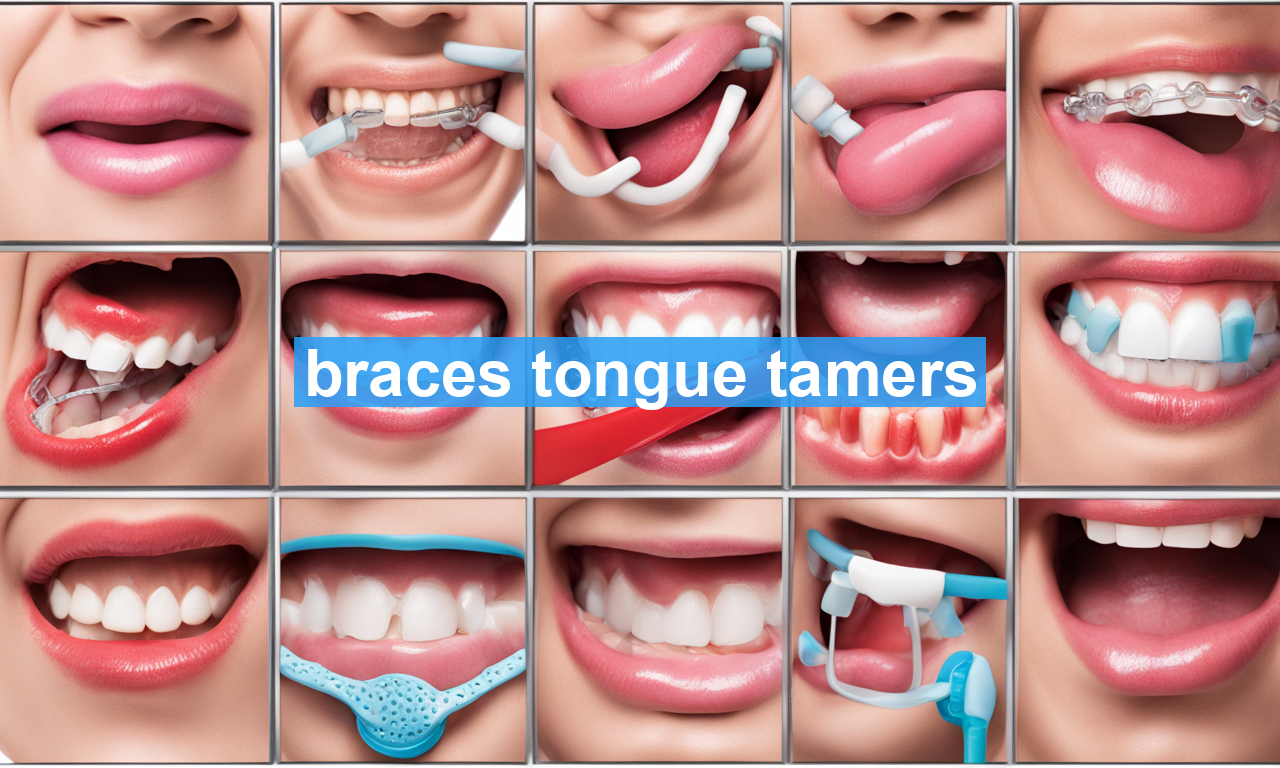Imagine sitting in the orthodontist’s chair, both excited and a tad apprehensive, as you prepare to embark on your journey with braces. You’re ready for straighter teeth and a confident smile. But wait! You’re handed something called “tongue tamers,” and that’s when the questions start bubbling up. Tongue tamers? Are they something out of a medieval fairy tale, or are they an essential part of modern orthodontic treatment?
In this article, we’ll demystify what tongue tamers are, why they matter, and how they can make your orthodontic journey smoother. With a focus on accessibility and friendly advice, we’ll also answer some of the most common questions about these tiny but mighty orthodontic aids.
What Exactly Are Tongue Tamers?
Let’s start with the basics. Tongue tamers are small, often barely noticeable devices that orthodontists attach to braces. Their primary purpose is to prevent the tongue from improperly pressing against the teeth, which can impact the effectiveness of orthodontic treatment. Think of them as a mini obstacle course for your tongue, helping it stay in a position that supports healthy tooth movement.
Why Are Tongue Tamers Used?
While braces are designed to align your teeth, sometimes the tongue can thwart this process. When the tongue repeatedly presses against the teeth, it can cause crossbites, open bites, or other alignment issues. Tongue tamers serve as a gentle reminder to the tongue, encouraging it to rest behind the teeth rather than pushing against them. This helps ensure that the orthodontic forces applied by braces can do their job effectively.
Common Concerns and Considerations
Do Tongue Tamers Hurt?
One of the most frequent concerns among patients, especially those new to braces, is pain. The good news is that while tongue tamers may cause a bit of initial discomfort as you adjust, they are not inherently painful. The feeling is often described as a mild inconvenience rather than full-blown pain.
How Long Will I Need Them?
The duration for which you’ll need tongue tamers varies. Typically, they are used for a few months to help retrain your tongue’s resting position. However, your orthodontist will be the best person to determine how long they’ll need to stay in place based on your specific needs and progress.
Is It Difficult to Speak with Tongue Tamers?
Another common concern is how tongue tamers might affect your speech. Rest assured, while you might experience a slight lisp or speech alteration immediately after placement, most patients adjust quickly. With a little practice, speaking becomes natural once more. If you’re still worried, consider reading aloud or practicing tongue twisters as exercises to help adapt your speech.
Caring for Your Tongue Tamers
Proper maintenance can make your experience with tongue tamers much smoother. Here’s how:
- Regular Cleaning: Just like with regular braces, keeping everything clean is crucial. Use an orthodontic-friendly toothbrush to gently clean around your tongue tamers, preventing plaque buildup.
- Watch Your Diet: Sticky or hard foods can easily dislodge tongue tamers, so it’s advisable to avoid them. Opt for softer food choices whenever possible.
- Regular Check-Ups: Schedule regular visits with your orthodontist to ensure everything is in place. They can make adjustments if needed and offer guidance on any issues you might encounter.
Additional Tips for a Smooth Journey
Stay Patient
Patience is key when dealing with any orthodontic device. Remember, the goal is to achieve that picture-perfect smile, and a little adjustment period is a small price to pay. Focus on the end result, and take each day as it comes.
Communicate with Your Orthodontist
If any concerns or persistent discomfort arise, don’t hesitate to consult your orthodontist. They can offer solutions or adjustments to help alleviate any issues. Open communication ensures a more pleasant orthodontic journey.
The Significance of Tongue Tamers in Overall Treatment
While they might seem like a small element in the grand scheme of orthodontic treatment, tongue tamers play a crucial role in the effectiveness of braces. By actively reducing pressure from the tongue, they complement the work that braces do to move your teeth into optimal positions.
In conclusion, tongue tamers are a beneficial, albeit tiny, part of the orthodontic experience. They support the long-term success of your braces and help in achieving that perfect smile. So the next time you find yourself in that orthodontist chair, you can confidently embrace your braces’ journey—with tongue tamers and all!

